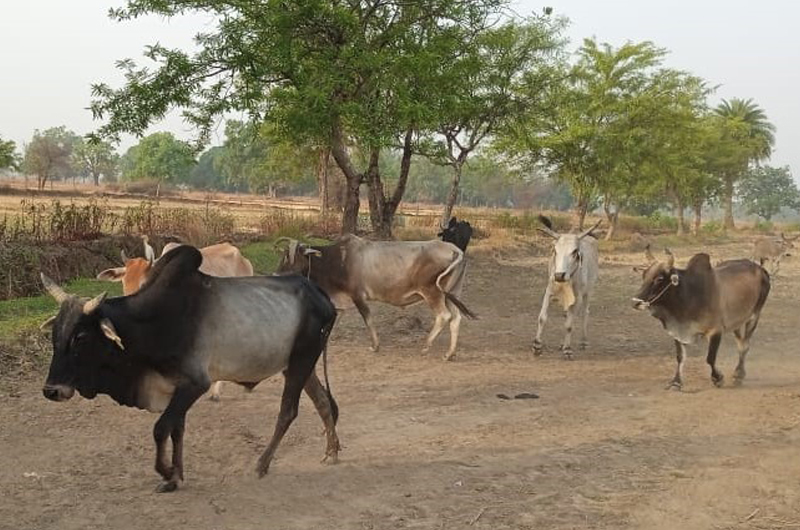The Bundelkhand Region, comprising 14 districts of Central India, is particularly prone to high temperatures. Bharat Dogra and Reena Yadav seek to examine the effects of the prolonged heat wave on the fauna of the area. There must be much more awareness regarding the need to protect various forms of life in heat wave conditions, they say
While the heat wave and many of its adverse impacts have been widely discussed in recent times, one important aspect that has not received adequate attention is its effect on birds and animals. Recently, two worrying cases of large-scale avian and mammalian deaths were reported from the Bundelkhand Region, made up of seven districts in Uttar Pradesh and an equal number in Madhya Pradesh. In the first instance, a large number of parrots and some other birds as well as bats were found dead in a park in Atarra Town in Banda District. In another case, in a park in Banda City, ironically called Oxygen Park, many bats were found dead.
The sighting of birds has also decreased significantly, raising concerns regarding them. Rampyari Yadav, who lives in Atarra says, “Earlier I used to feed sparrows almost daily near my kitchen. But for almost a month now I have not seen any sparrow.” Many people also observe that the birds appear to be very vulnerable and weak.
A special feature of the Bundelkhand Region is the large number of cattle left to roam freely. With no one to provide for them, they keep moving from one place to another in search of water and pasture. As the heat intensifies, water sources dry up and there is less and less to eat in the grasslands. It has been reported that the extremely dry grass in some places is actually harmful and several heads of cattle have perished after eating it.
Bundelkhand’s forests have been badly depleted over the recent decades and, as a result, wildlife has already been badly hit; but during heat wave conditions their problems increase due to lack of water sources. As far as farm and dairy animals are concerned, although rural households try their best to protect them from the heat, in poorer households with restricted space, there is a limit to the extent of protection, water and fodder they can provide. These dairy and farm animals like to take dips in village tanks and buffaloes in particular need to wallow in the ponds – something they find hard to do with pond sizes shrinking in the hot weather.

Shrinking water bodies also pose a threat to fish and other creatures that live in them. Recently, it was reported that several thousand fish had died in the Mandakini River in Chitrakut District. According to news reports, faulty operation of gates leading to sudden decline of water levels in a stretch of the river was responsible for this. This was entirely avoidable. Even otherwise, the Mandakini and several other rivers of the region have been shrinking due to flawed policies, including those facilitating large-scale, indiscriminate sand mining.
Clearly, there must be much more awareness regarding the need to protect various forms of life in heat wave conditions. Care should be taken to create some water and fodder supplies for roaming cattle, and water and rain water conservation work should be taken up in forests so that the basic needs of wildlife are met. The traditional practice of providing fresh water and food for birds should also be stepped up in heat wave conditions.
(Bharat Dogra is a senior freelance journalist and author who has been associated with several social movements and initiatives.
He lives in Delhi. Reena Yadav is a student.)



 from Webdoux
from Webdoux